floating homes – when and where did they start?
Floating homes, a captivating and modern concept, have taken the world by storm. But when and where did this innovative way of living originate? We explore the history of floating homes, delving into their evolution and current popularity.

The ORIGIN of floating homes
It’s all but impossible to talk about floating homes without bringing houseboats into the story. But, before we examine the differences between the two ideas, let’s look at the timeline. It seems that the floating home predates the houseboat.
It’s not a precise science because this story stretches back into ancient history. However, if we accept the notion that a floating home has no motor or means of propulsion – as opposed to a boat, which does – it’s reasonable to say that perhaps the first floating homes were the tethered waterside shacks lived in by fishermen in ancient times.
Although both ideas can be traced back centuries to China, India, Europe and America it seems that the actual business of living on a boat – making it a houseboat – comes a bit later.
If we think of it as a family tree, the houseboat’s descendants are more likely, although not exclusively to be in the leisure and pleasure sectors, whilst those fishermen’s shacks are in effect the forefathers of today’s floating homes.
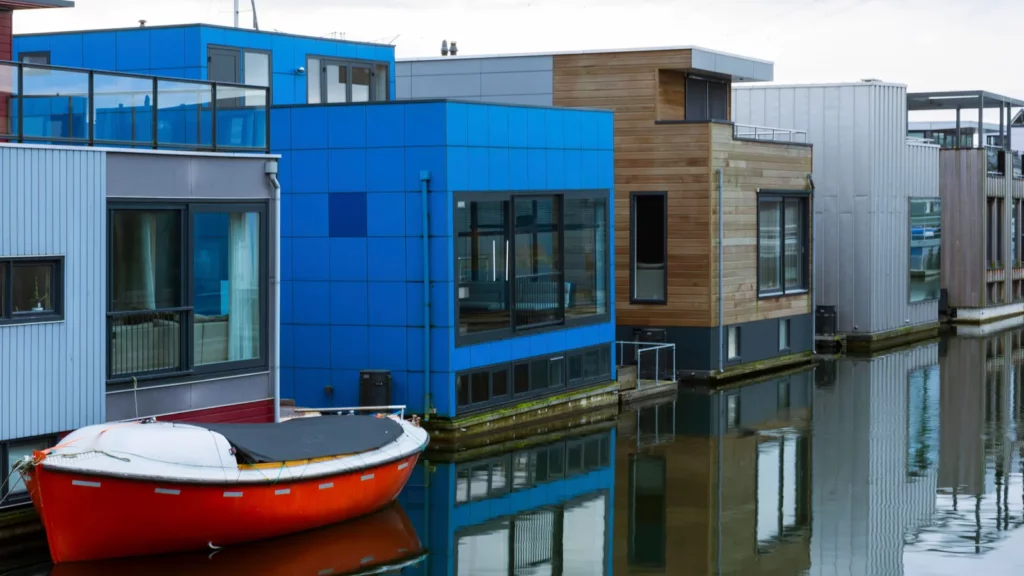
Living on the Water as a Worldwide Phenomenon
The Floating Home goes from alternative lifestyle to mainstream
Almost inevitably it was in America where the floating home became the home of choice for those seeking an alternative lifestyle. Primitive shacks, still used for fishing, started to attract people who wanted to live ‘differently’.
By the 1950s in places like Portland for example, the shacks were being tidied up and a new class of occupant arrived. Looking for something more comfortable, and sometimes a holiday retreat, these people adopted and improved the basic design of a ‘shack on a raft’. A community spirit started to emerge among these like minded occupants.
Through the 1950s and 1960s, those eras when ‘dropping out’ and ‘living your own way’ became the thing, the idea of living in a floating home, like so much of the originally alternative culture, moved steadily into the mainstream. The magic ingredient was the allure of living on the water.
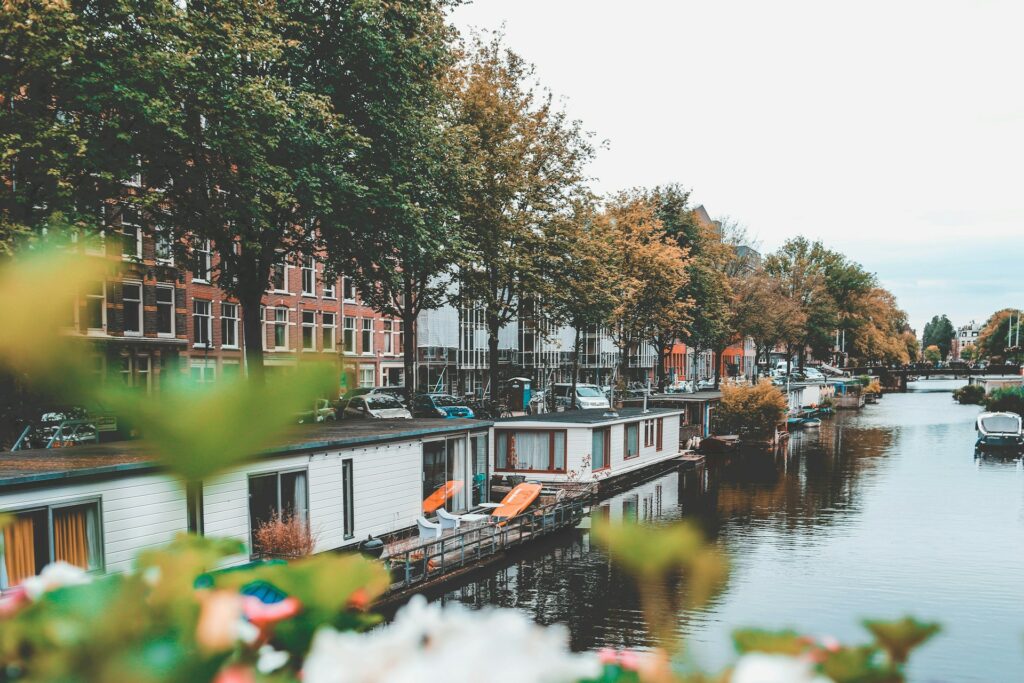
The history of floating homes and their European connection is probably the strongest in the Netherlands. Like America, this place has a long tradition of alternative living. Amsterdam has always attracted the adventurous. It’s no surprise then that living on the water was a lifestyle that suited this city of canals.
In fact it’s an American publication that’s recently reported on the Dutch living on the water.
The Dutch TV Director Marjan de Blok, who is much involved with the subject says that ‘Living on the water is normal for us’. The Dutch experience is another example of something that’s grown and evolved.
What were initially cheap, sometimes ramshackle, water borne dwellings have become seriously designed communities embracing green credentials, community spirit and a fresh take on urban residences that are now seeing a significant rise in value.
In fact Dutch thinking has begun to spread not just into the mainstream but has influenced thinking worldwide.
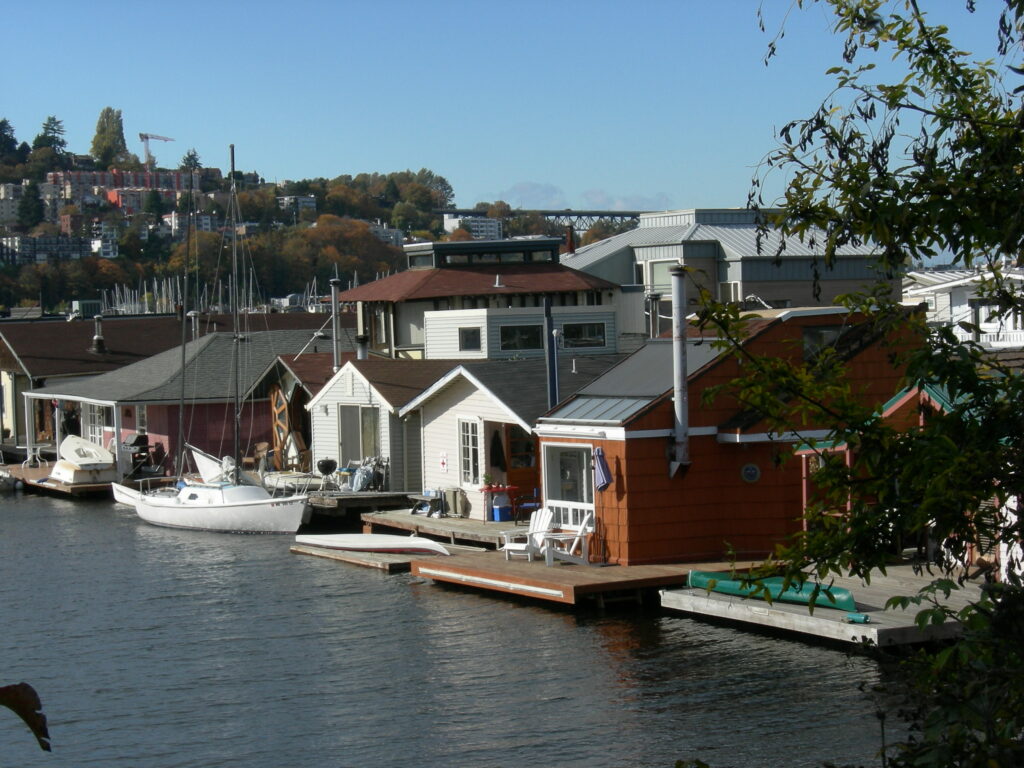
living on the water becomes a worldwide debate
Suddenly, all over the world planners and architects were embracing the ideas of living on the water, and floating homes. They were coming at it from a different direction. In this global debate the issue now was how to break out of traditional town and city planning, and how to address the problem of land availability. In South East Asia floating villages started to appear. Urban population density could, it seemed, be mitigated with big ideas. Ideas like floating homes.
And what’s more, free from the constraints of conventional city design it was possible to develop concepts for floating houses in ways that couldn’t be applied to urban dwellings.
And over and above all of it was still that magic ingredient. The allure of living on the water.
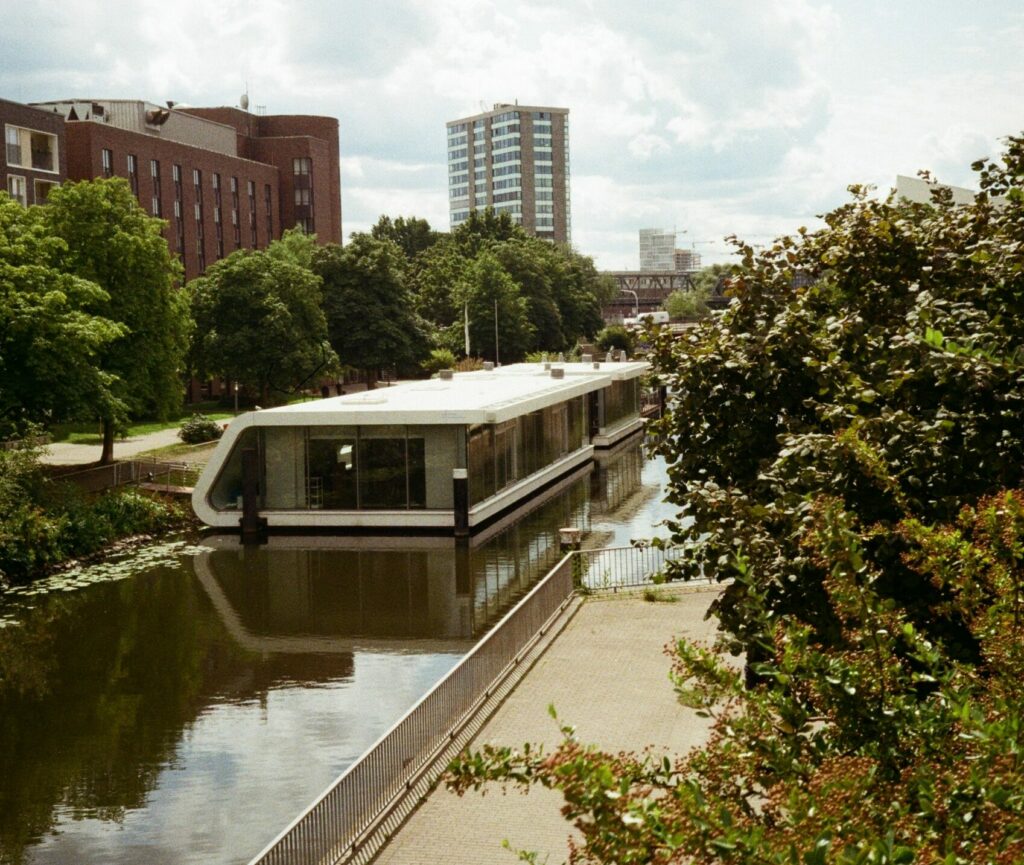
Fast Forward the floating home to here and now
It’s 2024, and probably now more than ever, we’re looking for ways to live with more tranquillity, more peace and quiet, and as comfortably as possible.
We realise now that living as comfortably as possible doesn’t mean living in a mansion. It means living in the right space, at the right pace. And for many of us – growing numbers of us – that means exploring new, different ideas. New ideas that, at the same time, embrace timeless desires. A modern, well designed, floating home ticks both boxes. It’s a real, really comfortable home, and it delivers that age old magic.
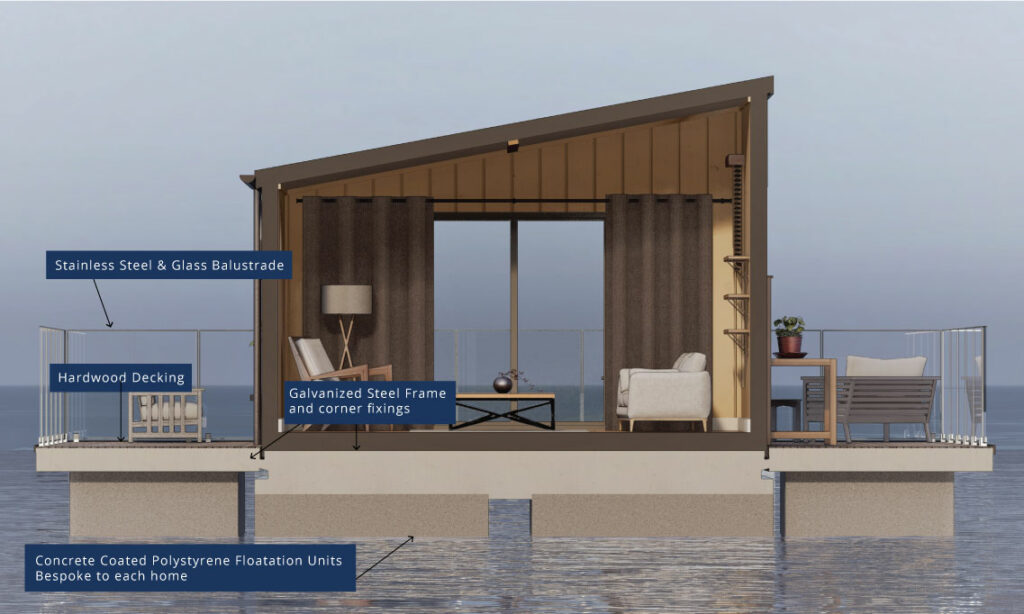
A Floating Home – the framework, floats and facts
Every dream has to be based on some reality and living on the water isn’t possible without some serious design and development.
- Today’s floating home sits on a galvanised mild steel frame which is below the water’s surface.
- The framework links to floats, which are unique to each home, ensuring stability.
- Above all of that is decking, and on that sits the home.
It’s a home – not a boat. It doesn’t have an engine, it doesn’t cruise around. It does rise and lower with the tide. You’re in touch with the water, you’re living on it and by it.
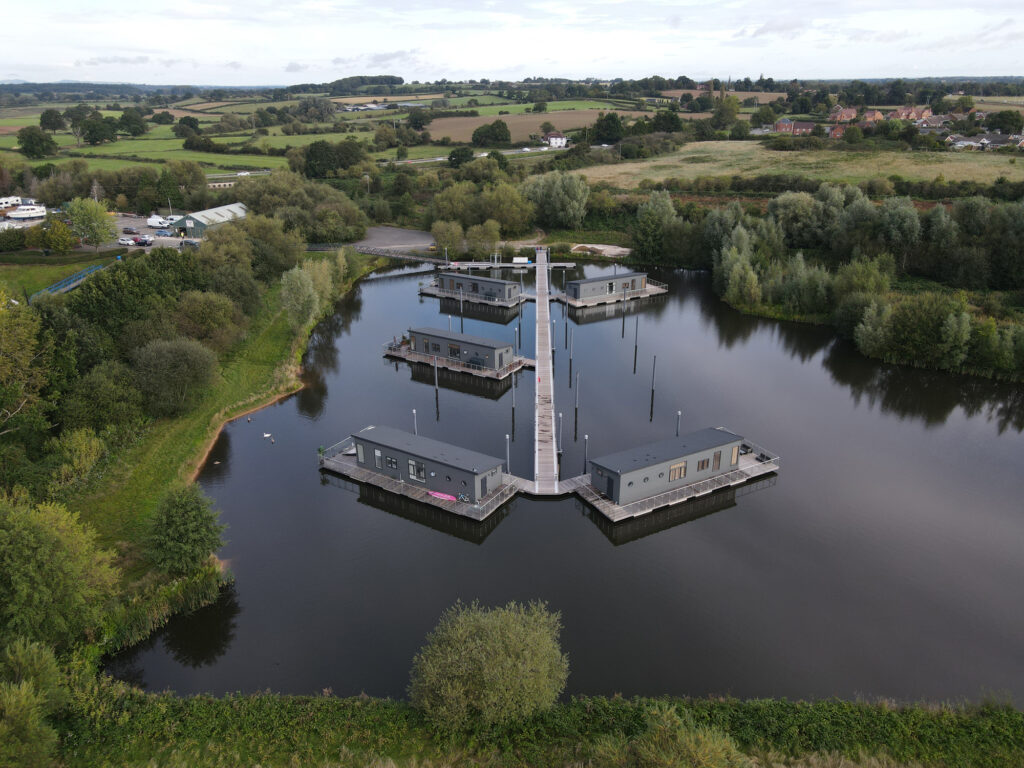
The allure of living on the water At Upton Lake
Everything about the entire idea of living in a floating home comes together at this beautiful marina in the Malvern Hills.
Waterfront Living at Upton Lake is one of the most talked about and sought after locations right now.
Stunningly designed and superbly engineered homes have been created and located here to offer a luxurious lifestyle in a superb setting. It’s the perfect combination. This is where you can have a floating home as your forever home. You have the luxury of a beautifully appointed living space, in a beautiful space worth living in. You have a floating home, you have the allure of living on the water. Here and now.